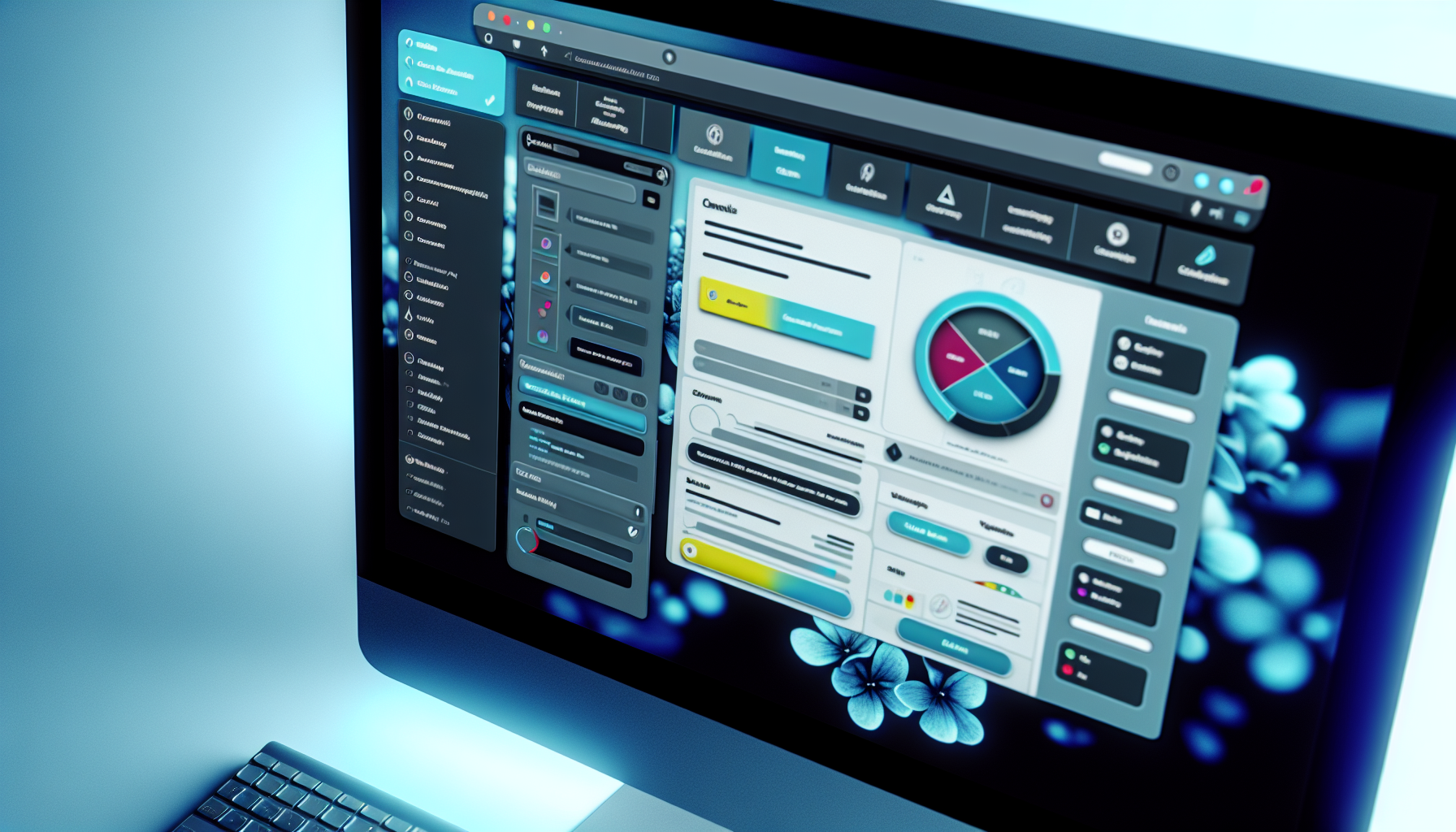Mastering Ruby on Rails Development: Your Blueprint for Building Powerful Web Apps
If you’re exploring Ruby on Rails development, you’re probably seeking a comprehensive guide that cuts through the noise. Rails, a mature framework with Ruby at its core, offers developers the tools to build scalable, maintainable web applications efficiently. This article responds to that need, breaking down Rails’ MVC architecture, development best practices, and the community ecosystem supporting your growth as a developer. Get ready to transform your web development skill set.
Key Takeaways
- Ruby on Rails is a comprehensive full-stack web development framework that has revolutionized web development with its convention-over-configuration approach, MVC architecture, and extensive libraries, fostering rapid and scalable web application development and create web-sites and pages for travel industry like https://krok-travel.pl/ru/countries/turcziya/
- Rails applications are structured to enhance developer productivity, with an emphasis on MVC design, routing web requests efficiently, and database management through Active Record, which simplifies database interactions using O/R mapping.
- Rails supports modern web development with best practices for writing clean, maintainable code, extending functionality through Gems and tools, and providing a strong community for innovation and support, alongside advanced features for building dynamic, real-time web applications.
Exploring the Rails Framework: A Developer’s Primer

Often referred to simply as “Ruby on Rails”, Rails is a server-side web application framework, written in the Ruby programming language. It’s a full-stack solution, providing default structures for a database, a web service, and web pages. Created by David Heinemeier Hansson in 2003, Rails has since shaped the landscape of web development.
Web development has been significantly impacted by the Rails framework. It has:
- Made development quicker
- Advocated for modular design
- Brought a vast range of open-source libraries to the table
- Facilitated rapid iterations
- Enabled scalable product development
- Provided flexibility in expanding applications
- Simplified the implementation of business logic
- Encouraged adherence to standards and best practices
The Rails way of doing things has revolutionized web development and continues to be a popular choice for developers.
Rails stands out among other web development frameworks for numerous reasons. It offers:
- Cost-effectiveness
- Adherence to the Model-View-Controller (MVC) architecture
- Easy change management
- Security
- High performance
- Flexibility
- A convention-over-configuration approach
- Extensive libraries for rapid development
These features make Rails suitable for creating scalable web applications.
The Structure of a Rails Application
A Rails application constitutes more than mere code. It’s a carefully organized structure of components working together to create web services and applications. The heart of this structure is the ‘app’ directory, represented by the Rails logo. Let’s delve deeper into the anatomy of a Rails application and its key constituents.
Understanding MVC in Rails
At the crux of Rails’ architecture is the Model-View-Controller (MVC) pattern. The MVC pattern is a design that organizes an application by separating data management, business rules, and the user interface. This pattern is implemented using the Ruby programming language.
The Model has a crucial role in handling data. It manages data parsing, fetching, and other data-related tasks using the Ruby programming language. On the other hand, the View component is responsible for what the user sees and interacts with. It defines the presentation of the application data.
Finally, the Controller manages browser requests and facilitates communication between the model and the view. It’s the bridge that connects the user interaction with the application’s data.
Routing Web Requests
The Rails routing engine plays a vital role in any application. It’s responsible for dispatching incoming requests to the appropriate controller action or Rack application based on the defined routes. Essentially, it serves as the gatekeeper for all inbound HTTP requests.
Routes in a Rails application are defined within the config/routes.rb file. It’s here that the Rails router recognizes URLs and dispatches them to a controller’s action. It also generates paths and URLs, acting as the roadmap for your application.
Rails provides several routing methods, including resource routing, which is primarily used for defining routes for a collection of resources. Dynamic routing is another feature of Rails. By incorporating variables within the routes, referred to as dynamic segments, the routes can trigger different actions depending on the parameter values provided within the URL.
Database Management with Active Record
Active Record, an integral part of Rails, is a database management system that streamlines the creation and use of business objects requiring persistent storage in a database. Acting as an intermediary between your Ruby program code and the database tables, Active Record enables you to execute queries and manipulate data through migration via the composition of Ruby code.
Active Record is a fundamental component within the Ruby on Rails framework. It simplifies the intricacies of web application development by providing an abstraction for complex database interactions. This is done through Object-Relational Mapping (O/R mapping), which allows developers to engage with databases more easily.
Active Record streamlines database management by automatically linking database tables to Ruby classes and columns to object attributes. This enables developers to conveniently execute CRUD operations on database records using a familiar Ruby object interface.
Apart from these, Active Record offers several features like:
- the ability to create and utilize business objects that interact with a database
- nested queries
- DRY scopes
- the ‘where.not’ method
- ‘first’ and ‘take’ methods
- the utilization of ‘.unscoped’ to retrieve all records from a table.
Setting Up Your Rails Development Environment
Setting up your Rails development environment is a prerequisite to start developing with Rails. The necessary system requirements may differ, but there are resources available for beginners interested in initiating a Rails application from the ground up. You can consult the official Rails guide for initiation or explore other sources offering instructions for configuring a development environment to build Rails applications.
If you’re using Windows, you can utilize Rails Installer or adhere to the provided instructions for installing the necessary dependencies for compiling Ruby. For MacOS users, you can install Homebrew, a tool that facilitates the installation and compilation of software packages from source. To install rails, access the terminal and execute the command for installing Ruby on Rails. Validate the installation by executing a command to confirm the successful installation of Rails.
For Linux users, the steps for setting up a Rails development environment include installing ROR Dependencies, installing rbenv, and installing Rails. Detailed instructions can be found in various sources, ensuring a smooth and easy installation process.
Crafting Modern Web Applications with Rails

The process of building a modern web application with Rails involves multiple stages. Here is a step-by-step guide:
- Install the Rails framework and create a new Rails application.
- Configure the database.
- Generate controllers and views.
- Write application logic in Ruby.
- Test the application.
- Deploy the application to a web server.
To support modern web development, it’s recommended to focus on user experience from the start by:
- Wireframing the site
- Following the single responsibility principle for design decisions
- Maintaining a well-organized folder structure for development
- Ensuring the application’s security
Recommended best practices for utilizing Rails in modern web applications include:
- Prioritizing application security
- Efficiently organizing code
- Appropriately managing errors
- Fostering productive development habits
JavaScript can be integrated with Rails through the use of StimulusJS to incorporate basic interactive features, or with ReactJS for more intricate components and behaviors, thereby elevating the user experience of modern web applications.
The Rails Way: Writing Clean and Maintainable Code
Prioritizing convention over configuration is the essence of the Rails way. It is based on a set of coding conventions and best practices that aim to simplify and standardize development, while also promoting the creation of clean and maintainable code.
Essential practices for writing clean code in Rails include:
- Adhering to naming conventions
- Following the Ruby Style Guide
- Maintaining short and singularly focused methods
- Using descriptors for variable and method names
- Implementing namespacing through modules
Rails promotes the development of maintainable code by advocating for the separation of responsibilities into smaller classes and by emphasizing code reusability and modularity through principles such as DRY (Don’t Repeat Yourself).
Rails Tools and Gems: Extending Functionality

Specialized libraries and resources, known as Rails Gems and tools, expand the capabilities of Rails applications. They provide functionalities for:
- Auditing
- Code analysis
- Quality enhancement
- Testing
- Debugging
In addition, Rails tools like Rubocop, NetBeans, and RubyMine contribute to code organization and development activities, collectively improving the functionality of the Rails framework and simplifying the development process.
Several widely utilized Gems in Rails development include:
- Bundler Audit
- FriendlyId
- Bullet
- Reek
- Rubocop
- rails_best_practices
- Devise
These Gems cater to diverse development requirements like authentication, code optimization, and database interactions in a general purpose programming language.
Developers can install and manage Gems in their Rails projects by using the command ‘gem install [gem_name]’ for installing individual gems, or by employing Bundler to handle dependencies and ensure the appropriate versions of gems are used throughout development, testing, and production environments.
The Rails Community: A Hub of Innovation

Active contributions to the development of the Rails framework are made by the Rails community. They oversee:
- Releases
- Assess pull requests
- Address conduct issues
- Prioritize security and significant new features.
The Rails community comprises developers like:
- David
- Jeremy
- Aaron
- Xavier
- Rafael
- Guillermo
- Carlos
- Anthony Eden
- Tarmo Tänav
- Josh Susser
- Frederick Cheung
Many ruby developers actively contribute to the development of the Rails framework.
To become an active member of the Rails community, one should engage in activities such as:
- Reporting issues
- Submitting pull requests on GitHub
- Interacting with other developers on platforms like Discord and Slack, as well as in online forums and discussion platforms
Commonly used Rails community forums for learning and collaboration include the GoRails forum and Stack Overflow.
Advanced Rails Features for Dynamic Web Apps

Action Cable is one of the advanced features of Rails. It effectively integrates WebSockets with the entirety of the Rails application, enabling the development of real-time features. This includes the creation of real-time functionality such as chat applications, notifications, and live updates.
Action Cable in Rails seamlessly integrates WebSockets with the rest of your Rails application, allowing for real-time features to be written in Ruby. It’s utilized for creating dynamic web applications by enabling real-time communication between the server and the client.
The asset pipeline of Rails contributes to the dynamism of web applications by offering a framework for managing the delivery, concatenation, and minification of JavaScript and CSS assets.
Integrating Rails with Other Languages and Services
Swift and effortless application development, leading to expedited software development, can be achieved by incorporating Rails with other languages. Rails can be integrated with JavaScript using tools such as esbuild, rollup.js, or Webpack to bundle JavaScript in the Rails application. Alternatively, JavaScript can be directly implemented in the Rails project to achieve performance and responsive design advantages.
In order to integrate Ruby on Rails with GraphQL, the ruby gem called graphql-ruby can be utilized. This gem adds the required files to the project and enables the creation of a Rails-GraphQL API. Noteworthy Ruby on Rails applications such as Github and Shopify have already implemented GraphQL in their production environments.
Rails can indeed be integrated with Java through the use of JRuby, which is a JVM-based interpreter for Ruby. By utilizing JRuby, Rails can harness the capabilities and features of the Java platform, including the ability to access Java libraries.
Scaling Your Rails Applications
In the context of scaling Ruby on Rails applications, vertical scaling refers to enhancing performance and operational efficiency by upgrading the capabilities of an existing server, including CPU and RAM. Conversely, horizontal scaling entails the addition of more servers to manage the workload, with the goal of establishing an efficient environment through load distribution.
Effective strategies for scaling a Rails application involve:
- Implementing caching strategies
- Utilizing background job processing
- Conducting vertical scaling of servers
- Efficiently scaling the database server through replication and other database management techniques.
In order to enhance the performance of a growing Rails application, it is essential to employ the following techniques:
- Caching complex database queries
- Optimizing the server and database
- Utilizing background jobs
- Refining the asset pipeline
- Improving views and codebase
- Optimizing the database schema and indexes
- Streamlining file uploads and image processing
- Minimizing the overhead from third-party services and external API calls.
Optimizing Performance in Rails Development
Caching in Rails applications optimizes performance, manages large workloads, and enhances database query performance. Utilizing tools such as Rails.cache allows for the implementation of caching for frequently accessed data or resource-intensive operations.
To enhance database query performance in Rails, one can employ the following strategies:
- Eager loading to eliminate N+1 queries
- Utilize database indexes for faster data retrieval
- Enforce query limits
- Implement caching strategies
- Avoid unnecessary queries
- Monitor and analyze database query performance
These techniques can greatly improve the performance of your database queries in Rails.
Recommended best practices for optimizing performance in Rails development include:
- Caching and database optimization
- Server optimization
- Expanding RAM capacity
- Implementing load balancing methods
- Selecting the appropriate web server
- Optimizing the code
- Employing various techniques to diminish server response times and resource consumption.
Security Practices in Rails Development
Security vulnerabilities common in Rails applications include Cross-Site Scripting (XSS), Cross-Site Request Forgery (CSRF), SQL Injection, and insecure direct object references.
Cross-site scripting (XSS) is a form of injection attack in which malicious scripts can be injected into content and subsequently executed by the user’s browser. In Rails development, XSS prevention is facilitated by the automatic escape of output as a default behavior, as well as the provision for developers to manually escape untrusted data entering the application.
In order to secure sensitive data in Rails applications, it is advisable for developers to:
- Utilize robust encryption
- Incorporate monitoring and logging for potential breach detection (ensuring that sensitive data is not logged)
- Manage user-specific properties through sessions with thorough verification for each request
- Implement various techniques to improve session management and bolster cookie security
Testing and Debugging in Rails
Several tools available for Rails testing include RSpec, Factory Bot, Capybara, VCR, and WebMock. Rails also encompasses built-in mechanisms for testing your application.
Recommended best practices for testing in Rails involve utilizing the built-in mechanisms provided by Rails to test your application and employing RSpec as the widely accepted testing framework for unit testing.
In order to debug a Rails application effectively, one can utilize the debugger to gain insights into the Rails source code and troubleshoot any request. Alternatively, the Rails’ built-in debug method can be employed to showcase data for any segment of the application.
Summary
This comprehensive guide has taken you through a journey of understanding the Ruby on Rails framework, its structure, how to set up a development environment, coding practices, and more. You now have a blueprint to master Ruby on Rails, whether you’re a beginner or at an advanced level. Go forth and create powerful, scalable web applications with Rails!
Frequently Asked Questions
What is Ruby on Rails development?
Ruby on Rails development is a web application development framework written in the Ruby programming language, designed to make programming web applications easier by making assumptions about what every developer needs to get started. It allows you to write less code while accomplishing more than many other languages and frameworks.
What programming language is Ruby on Rails?
Ruby on Rails is a web development framework that uses the Ruby programming language. It is built on top of Ruby and provides a timesaving alternative for Ruby developers.
Is Ruby on Rails A Dying language?
No, Ruby on Rails is not a dying language. It still has an active community and is used in various domains, with the popular web framework continuing to be utilized in many projects worldwide.
How can I become an active member of the Rails community?
To become an active member of the Rails community, engage in activities such as reporting issues, submitting pull requests on GitHub, and interacting with other developers on platforms like Discord and Slack and online forums. Join the conversation and contribute to the community to make an impact.
What are some effective strategies for scaling a Rails application?
To effectively scale a Rails application, you can implement caching and background job processing, conduct vertical scaling of servers, and efficiently scale the database server through replication and other management techniques. These strategies are essential for handling increased load and maintaining application performance.